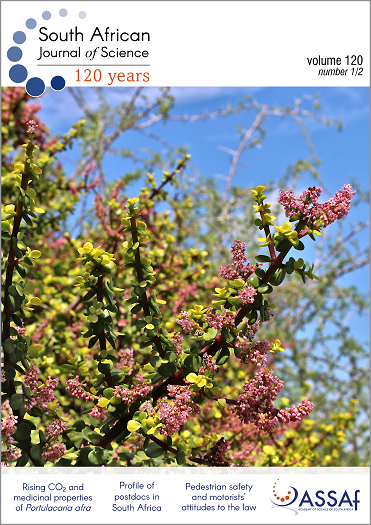Microbiological growth analysis on a 275 kV transmission line composite insulator in South Africa
DOI:
https://doi.org/10.17159/sajs.2024/15629Keywords:
composite insulators, biological growth, leakage current, transmission linesAbstract
Transmission line silicon rubber insulators are frequently subjected to harsh environmental conditions that can change their surface characteristics and result in a transient or permanent loss of hydrophobicity. Algae, fungi, mould, and lichen are examples of biological growth that can compromise the power system’s ability to operate safely by lowering the insulator’s flashover voltage. We evaluated and identified the major microorganisms that could be responsible for the flashovers of insulators in South Africa. Due to the difficulty of accessing insulators currently in use within the electricity network, only two insulators, from two provinces in South Africa, were used in the study. Although algae were not found on the insulators, two major filamentous fungi identified as Curvularia sp. and Aspergillus sp. were isolated. The absence of algae could be attributed to the weather pattern of the two locations where the insulators were placed during their use as part of the network. According to previous studies worldwide, the high occurrence of these fungi could be linked to the reduction of flashover voltage of the composite insulators. Although a larger survey including more insulators from all provinces in South Africa should be conducted, the current study demonstrates the need for a cleaning programme for insulators using cost-effective eco-friendly antimicrobial agents.
Significance:
- Degradation and loss of hydrophobicity on the overhead line composite due to biological growth were found to be an impediment to the safe operation of high-voltage insulators. Fungi were found to be the main factor causing the degradation of overhead transmission lines.
- With these data, a model can be developed to predict the rate of biological growth on a given insulator, to estimate the degradation of the surface conditions with time for the utility to know when to remove them from the line. Such a model could lead to a more reliable and efficient power system and reduce the engineer’s workload.
Downloads
Additional Files
Published
Issue
Section
License

All articles are published under a Creative Commons Attribution 4.0 International Licence
Copyright is retained by the authors. Readers are welcome to reproduce, share and adapt the content without permission provided the source is attributed.
Disclaimer: The publisher and editors accept no responsibility for statements made by the authors
How to Cite
- Abstract 690
- PDF 628
- EPUB 375
- XML 347
- Supplementary material 365
- Peer review history 48













.png)